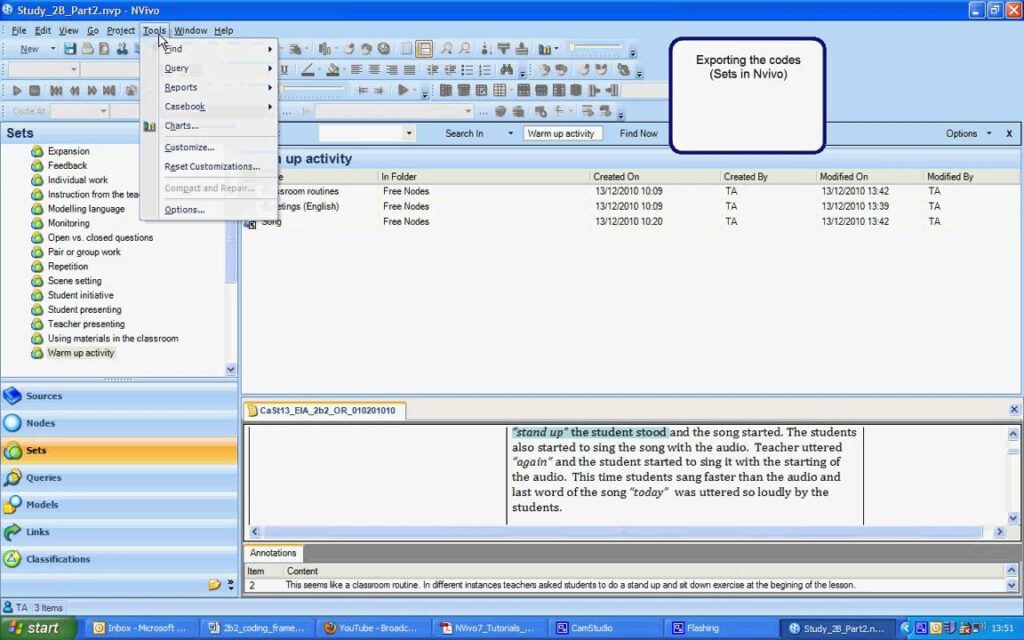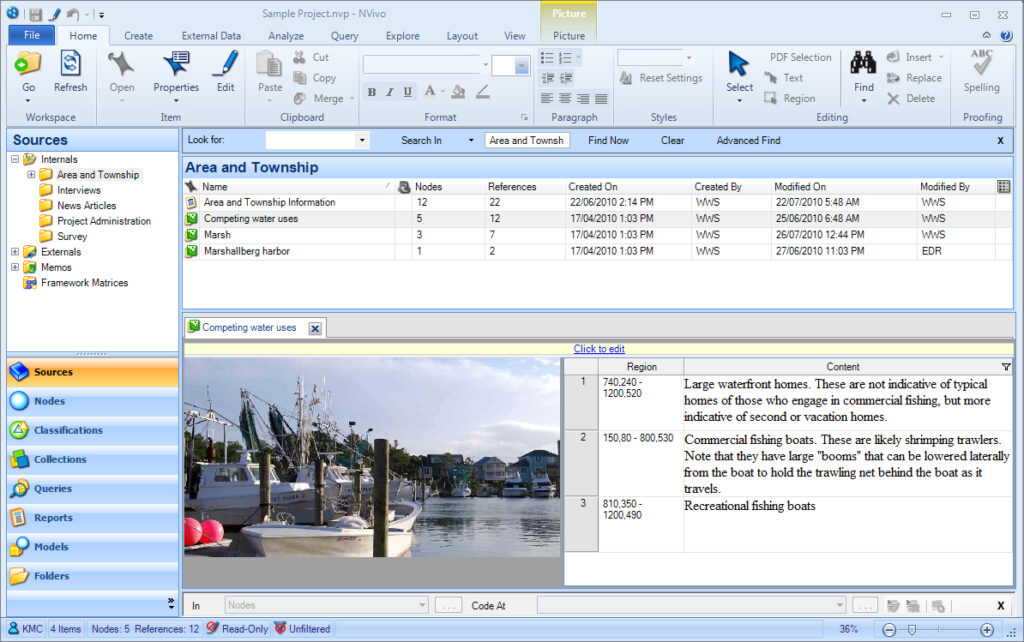Nvivo software free download crack
Nvivo is a powerful software tool designed to help researchers analyze qualitative data. It offers a range of features to organize, code, and interpret data from interviews, focus groups, surveys, and other sources. This guide will walk you through the essential steps of using Nvivo for qualitative data analysis.
Importing Your Data
Create a Project: Start by creating a new project in Nvivo. This will be your central hub for all your data and analysis.
Import Data: Nvivo supports various data formats, including text files, Word documents, Excel spreadsheets, audio and video files, and even web pages. Simply drag and drop your files into the project or use the import function.
Organizing Your Data
Create Nodes: Nodes are the building blocks of your analysis. They represent themes, concepts, or categories that emerge from your data. You can create different types of nodes, including:
Tree Nodes: Hierarchical nodes that allow you to organize your themes into sub-themes.
Free Nodes: Independent nodes that can be linked to any part of your data.
Matrix Nodes: Nodes used for comparing and contrasting different data sources.
Coding Data: Once you have created your nodes, you can start coding your data. This involves highlighting sections of text, audio, or video and assigning them to relevant nodes. Nvivo allows for multiple codings, meaning you can assign a single piece of data to multiple nodes.
Analyzing Your Data
Exploring Connections: Nvivo provides tools to explore the relationships between your nodes. You can create queries to identify:
Node Connections: Which nodes are frequently linked together in your data.
Co-occurrences: Which nodes appear together in the same document or data source.
Node Frequencies: How often each node appears in your data.
Creating Visualizations: Nvivo allows you to create various visualizations to represent your findings, including:
Word Clouds: Visual representations of the most frequent words in your data.
Networks: Diagrams showing the relationships between your nodes.
Matrices: Tables comparing different data sources.
Writing Reports: Nvivo helps you write reports and summaries based on your findings. You can easily export your coded data, visualizations, and analysis results to different formats.
Additional Features
Collaboration: Nvivo allows multiple researchers to collaborate on a project. You can share your project with colleagues and work together on coding and analysis.
Data Management: Nvivo provides tools for managing large datasets, including:
Search Functions: Quickly search for specific words or phrases across your entire dataset.
Data Filtering: Filter your data based on specific criteria, such as date, author, or node assignment.
Advanced Analysis: Nvivo offers advanced features for qualitative analysis, including:
Grounded Theory: Tools for developing theories based on your data.
Discourse Analysis: Features for analyzing language and communication patterns.
Content Analysis: Tools for analyzing the content of your data.
Conclusion
Nvivo is a powerful tool that can significantly enhance your qualitative data analysis. By following these steps, you can effectively organize, code, analyze, and interpret your data to gain valuable insights and draw meaningful conclusions. Remember to explore the full range of features available in Nvivo to optimize your research process.

Features:
- Data Aggregation: Seamlessly import and manage a wide range of data sources, including interviews, focus groups, social media posts, and more, all in a centralized platform.
- Qualitative Analysis: Utilize advanced coding tools, text analysis, and sentiment analysis to uncover patterns, themes, and insights within your data.
- Visualization: Create dynamic charts, graphs, and models to effectively communicate your research findings and support your conclusions.
- Collaboration: Facilitate team-based research projects with real-time collaboration features, allowing multiple users to contribute and share their insights.
- Cross-Platform Compatibility: Access your NVivo projects on Windows, macOS, and mobile devices, ensuring your research is always at your fingertips.

Technical Specifications:
Version: NVivo 12 Plus
Interface Language: English, French, German, Spanish, and more
Audio Language: Multilingual support
Uploader/Repacker Group: Anthropic
File Name: NVivo_12_Plus_Crack.zip
Download Size: 1.2 GB
System Requirements:
Windows:
- Operating System: Windows 10 or later
- Processor: Intel Core i5 or equivalent
- RAM: 8 GB or more
- Storage: 10 GB of available space
macOS:
- Operating System: macOS 10.14 (Mojave) or later
- Processor: Intel Core i5 or equivalent
- RAM: 8 GB or more
- Storage: 10 GB of available space
Adjusting Graphics Settings:
- Open NVivo and go to the “Options” menu.
- Select the “Graphics” tab.
- Adjust the settings according to your system’s performance and preferences, such as display resolution, rendering mode, and hardware acceleration.

Troubleshooting Common Issues:
- Activation Error: If you encounter an activation error, try restarting your computer and running the NVivo installer again.
- Compatibility Issues: Ensure your system meets the minimum requirements and update any necessary drivers or software.
- Slow Performance: Adjust the graphics settings or close any unnecessary applications running in the background to improve performance.
How to Use NVivo:
- Start by creating a new project or opening an existing one.
- Import your data sources, such as interview transcripts, focus group recordings, or social media posts.
- Utilize the coding tools to categorize and analyze your data, uncovering patterns and insights.
- Generate visualizations, such as charts and graphs, to effectively communicate your research findings.
- Collaborate with team members by sharing your project and incorporating their contributions.
- Explore the extensive help documentation and tutorial resources to maximize your NVivo experience.

Leave a Reply